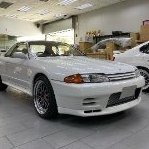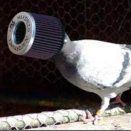Tips For Learning Welding
Announcements
-
Similar Content
-
Latest Posts
-
Not noticeably. Arguably, the catless turbo is going to work harder in a different direction, as it will spool up faster, go to higher speeds more easily. Only if it was tuned in the original condition. If it was a stock tune, using the AFM before and after the cat/dump change, then no, no retune needed. If the car is running on a MAP sensor, then it might well benefit from a retune. It might even run a little dangerously without a retune, but it could quite easily be fine.
-
By Dose Pipe Sutututu · Posted
We had this blend that uses 98RON + 10% Ethanol which brought it to 100RON. It's no longer available anymore unfortunately. -
Does it make a difference in your turbo having a shorter life if you have a cat converter as it causes that back pressure versus less/no back pressure with a decat? (Not sure if this is accurate) Also slightly different question if you went from a oem cat to a decat or vice versa will it require a tune? I heard if you change the dump pipe onwards it requires a tune?
-
No. Have only gotten as far as contemplating the task of having to put in the required fairly heavy wiring and fusing to run it (along with the big alternator), and preferring not to. But otherwise, it would be nice to have a little extra freedom as to exactly where the compressor is located and free up some space around the exhaust side of the engine.
-
Following from this in a related by not closely-related sense... Because I was buying a bunch of other GKTech stuff, I got some rear subframe collars. The history that leads up to this is: 25+ years ago the car arrived into the country with stock subframe bushes. At some point shortly thereafter I added Whiteline pineapple rings, set up neutral, and it improved the rear end behaviour. Well, it is my vague memory that I was happier with it with them in. Less axle tramp on launches, generally better, etc etc. ~2012 it got a new non-HICAS subframe with new stock bushes. No pineapple rings. I reckon that ever since then I've been dissatisfied with the axle tramp. Recently I've been f**king around a lot with all aspects of the suspension. One contemplation has been to relocate the rear lower control arm front mount points (and do the other things needed to make that work) to improve longitudinal rear grip by getting rid of some of the stupid anti-squat that Nissan ladled into the R32. But.... before doing that I thought I'd put some collars in. And.... The collars are good. The rear sounds a little bit different, but there has been no significant increase in NVH coming up into the body. In terms of rear behaviour - expansion joints on long sweeping elevated freeway ramps that would sometimes cause the rear to jiggle around a bit, no longer seem to do so. It appears that jamming chunks of metal into the gaps in the rubber so they can't move much is a really good thing. And the launch behaviour and general forward traction situation seems to be greatly improved too. It's impossible to be really sure, because the tyres are completely shagged - they are freakishly willing to let go right now. But as an A-B test with the same tyres it certainly seems to grip up a lot better. Highly recommended to anyone who still has stock bushes.
-




Recommended Posts
Create an account or sign in to comment
You need to be a member in order to leave a comment
Create an account
Sign up for a new account in our community. It's easy!
Register a new accountSign in
Already have an account? Sign in here.
Sign In Now